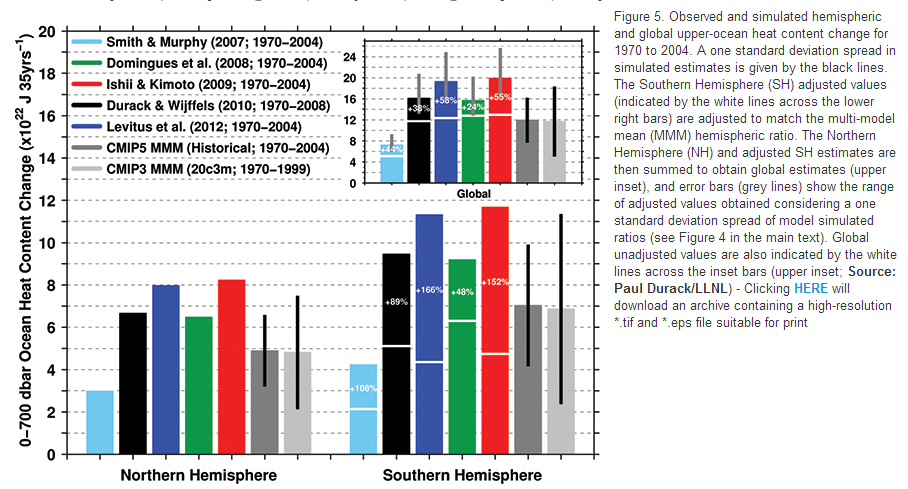PermeateFree said:
Why don’t you just read the article and then try to make sensible comment.
“They analysed satellite observations of sea surface height changes along with ocean temperature data collected between 1970 and 2004 and compared the results with climate models.
Sea surface height is an important indicator of global warming because as the ocean warms, sea levels rise, with additional increases due to the melting of land ice.”
Measurements by Jason-1 indicate that mean sea level has been rising at an average rate of 2.28 millimeters (.09 inches) per year since 2001
3 one hundredths of a degree C, statistically insignificant
————————————————————-
Argo data beginning 2005 for 0-700 and 0-2000 meters both show the global oceans warming at rates of only 0.03 deg C/decade.

From NASA Jet propulsion Laboratory, in an article about the papers -
Quote
In the 21st century, greenhouse gases have continued to accumulate in the atmosphere, just as they did in the 20th century, but global average surface air temperatures have stopped rising in tandem with the gases. The temperature of the top half of the world’s ocean — above the 1.24-mile mark (2000 meters)— is still climbing, but not fast enough to account for the stalled air temperatures.
and – The remainder (below 2000 meters) was essentially zero. Deep ocean contributed virtually nothing to sea level rise during this period.
On sea level rise –
Sea level is not rising
Professor Nils-Axel Mörner
Main points
At most, global average sea level is rising at a rate equivalent to 2-3 inches per century. It is probably not rising at all.
Sea level is measured both by tide gauges and, since 1992, by satellite altimetry. One of the keepers of the satellite record told Professor Mörner that the record had been interfered with to show sea level rising, because the raw data from the satellites showed no increase in global sea level at all.
The raw data from the TOPEX/POSEIDON sea-level satellites, which operated from 1993-2000, shows a slight uptrend in sea level. However, after exclusion of the distorting effects of the Great El Niño Southern Oscillation of 1997/1998, a naturally-occurring event, the sea-level trend is zero.
The GRACE gravitational-anomaly satellites are able to measure ocean mass, from which sea-level change can be directly calculated. The GRACE data show that sea level fell slightly from 2002-2007.
These two distinct satellite systems, using very different measurement methods, produced raw data reaching identical conclusions: sea level is barely rising, if at all.
Sea level is not rising at all in the Maldives, the Laccadives, Tuvalu, India, Bangladesh, French Guyana, Venice, Cuxhaven, Korsør, Saint Paul Island, Qatar, etc.
In the Maldives, a group of Australian environmental scientists uprooted a 50-year-old tree by the shoreline, aiming to conceal the fact that its location indicated that sea level had not been rising. This is a further indication of political tampering with scientific evidence about sea level.
Modelling is not a suitable method of determining global sea-level changes, since a proper evaluation depends upon detailed research in multiple locations with widely-differing characteristics. The true facts are to be found in nature itself.
Since sea level is not rising, the chief ground of concern at the potential effects of anthropogenic “global warming” – that millions of shore-dwellers the world over may be displaced as the oceans expand – is baseless.
We are facing a very grave, unethical “sea-level-gate”.

